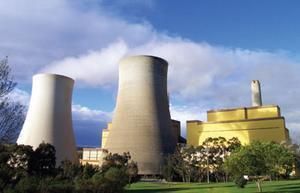The adoption of nuclear fuel will not address the key issues, says CIBSE in its response to the government's latest energy review
As the Government's latest Energy Review drew to a close on Good Friday, CIBSE was one of many organisations submitting a response. As well as responding from a building services viewpoint, CIBSE took the lead in formulating joint responses with the Construction Industry Council and the Engineering Forum for Energy. Together the responses represent a robust and comprehensive message to government from these sectors on this important issue.
CIBSE, however, questioned the need for yet another review so soon after the 2003 Energy White Paper and maintained that enormous technological potential exists to improve security of supply and reduce emissions on the supply side and demand sides, but policy stability is required to create a sustainable market for it.
In particular, CIBSE continued to support, and indeed call for, greater urgency in addressing rather than reviewing the following goals:
- To put the UK on a path to cut CO2 emissions by 60% by 2050, with real progress by 2020
- To maintain the reliability of energy supplies
- To promote competitive markets in the UK and beyond, helping to raise the rate of sustainable economic growth and to improve our productivity
- To ensure that every home is adequately and affordably heated.
The CIBSE response called for the adoption of an ‘energy hierarchy', a system of integrating and prioritising energy demand and supply according to the four goals of the review.
Moreover, the hierarchical approach naturally favours the early adoption of simple low-cost measures which offer early payback in financial terms and rapid contribution to the delivery of energy and emissions targets. The hierarchy favours, in this order: energy conservation, energy efficiency, renewables, low carbon and existing non-sustainable technologies.
Policy stability for reliable supply
To implement the hierarchy, CIBSE called for greater policy stability, including adopting long-term energy policies, to encourage investment. CIBSE also called for more improved efficiency standards, greater engagement with the public on energy use and greater use of public services as demonstration projects for energy efficiency and renewables.
CIBSE believes appropriate market mechanisms need to be in place to deliver reliable energy supply. The market must be given the legislative framework and policy stability to continue to deliver security of supply in the future and not be distorted by indiscriminate public funding of politically favoured options.
CIBSE urged government to make clear the adoption of nuclear power should not divert political will or private investment away from energy efficiency and exploitation of renewables.
From a technical perspective, CIBSE does not comment on nuclear technology. However, at a policy level CIBSE believes its adoption would not address the key issues of the review - security of supply and reductions in emissions by 2020 - whereas energy efficiency and the exploitation of renewables would.
Energy efficiency and renewables are not a panacea for these aims, but in CIBSE's opinion represent significantly better investments than other options in our energy hierarchy, most notably the politically contentious issue of new nuclear power. However, all options will require further R&D as well as public engagement.
The review also addressed the issue of fuel poverty. CIBSE believes that while this is a social issue, upgrading the thermal performance of housing stock will go a long way to reducing energy use and suggests this would be a more effective use of public funds than grants for fuel costs.
CIBSE has followed this agenda in its own consultation response as well as the CIC and Engineering for Energy responses and believes these responses point to a future stable energy market, experiencing security of supply at low cost and being able to meet the challenge of climate change through reduced emissions.
Source
Building Sustainable Design
Postscript
Samantha McDonough is director of policy at CIBSE























No comments yet